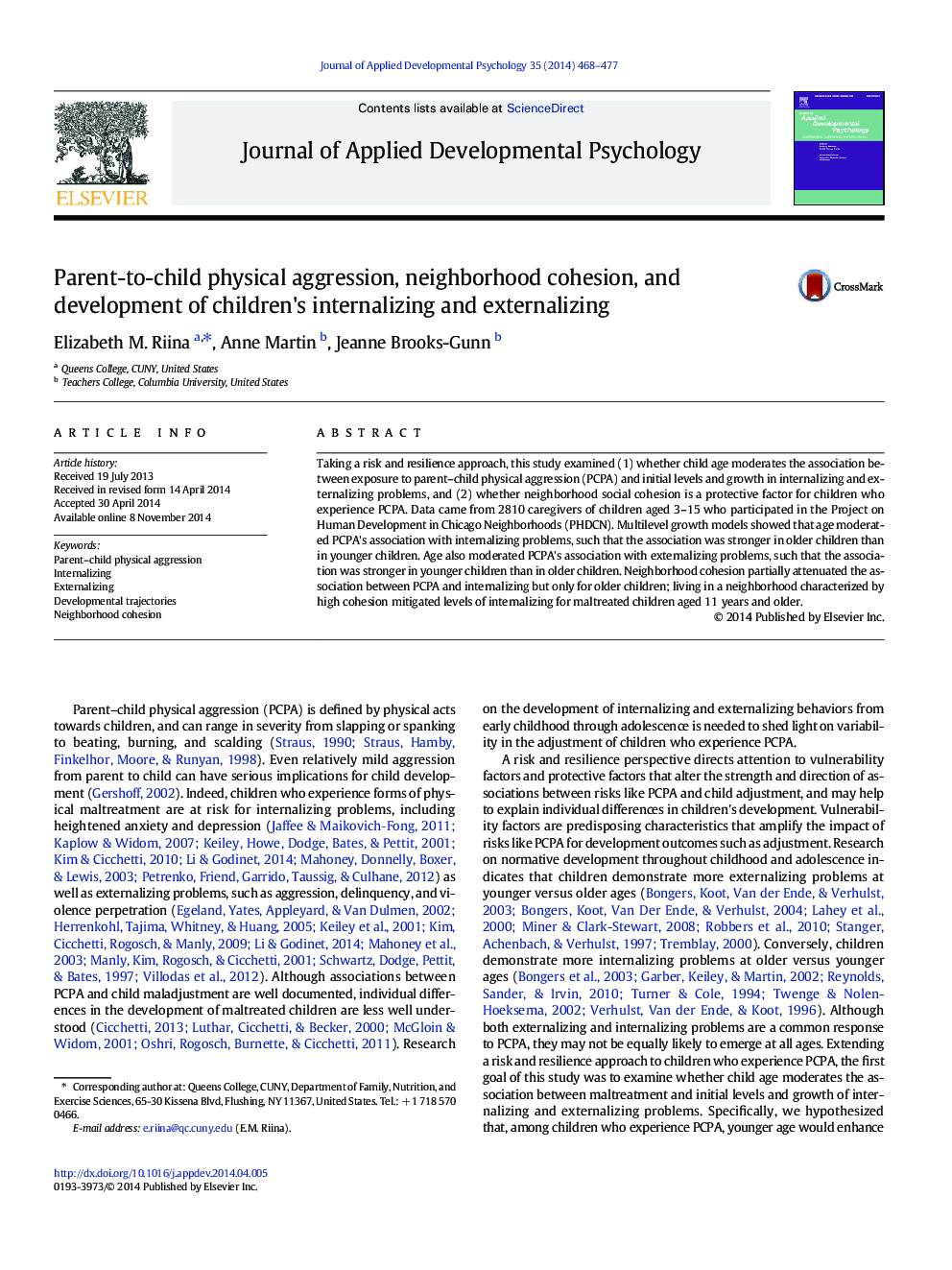| Article ID | Journal | Published Year | Pages | File Type |
|---|---|---|---|---|
| 359652 | Journal of Applied Developmental Psychology | 2014 | 10 Pages |
•We model growth of child behavior problems from ages 3-15•We examined the impact of parent physical aggression (PCPA) for behavior over time•PCPA was related to more internalizing at older age•PCPA was related to more externalizing at younger ages•Neighborhood cohesion buffered links between PCPA and internalizing
Taking a risk and resilience approach, this study examined (1) whether child age moderates the association between exposure to parent–child physical aggression (PCPA) and initial levels and growth in internalizing and externalizing problems, and (2) whether neighborhood social cohesion is a protective factor for children who experience PCPA. Data came from 2810 caregivers of children aged 3–15 who participated in the Project on Human Development in Chicago Neighborhoods (PHDCN). Multilevel growth models showed that age moderated PCPA's association with internalizing problems, such that the association was stronger in older children than in younger children. Age also moderated PCPA's association with externalizing problems, such that the association was stronger in younger children than in older children. Neighborhood cohesion partially attenuated the association between PCPA and internalizing but only for older children; living in a neighborhood characterized by high cohesion mitigated levels of internalizing for maltreated children aged 11 years and older.
